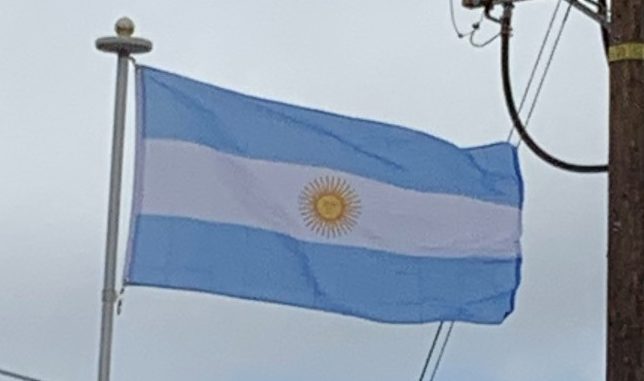After the May Revolution, the first times of the Argentine War of Independence, the Triumvirate claimed to be acting on behalf of the Spanish King Ferdinand VII, who was prisoner of Napoleon Bonaparte during the Peninsular War. Whether such loyalty was real or a trick to conceal independentism is a topic of dispute. The creation of a new flag with those colors would have been then a way to denote autonomy, while keeping the relations with the captive king alive.
Sun of May:
The sun is called the Sun of May because it is a replica of an engraving on the first Argentine coin, approved in 1813, whose value was eight escudos (one Spanish dollar). It has 16 straight and 16 waved sunbeams.
In 1978 the sun color was specified to be golden yellow (amarillo oro), to have an inner diameter of 10 cm, and an outer diameter of 25 cm (the diameter of the sun equals 5⁄6 the height of the white stripe. The sun’s face is 2⁄5 of its height). It features 32 rays, alternately wavy and straight, and from 1978 it must be embroidered in the “Official Flag Ceremony”.
Influence of the Argentine Flag:
The French privateer Louis-Michel Aury used the Argentine flag as a model for the blue-white-blue flag of the first independent state in Central America, which was created 1818 in Isla de Providencia, an island off the east coast of Nicaragua. This state existed until approximately 1821, before the Gran Colombia took over control of these islands. Somewhat later (1823) this flag was again used as the model for the flag of the United Provinces of Central America, a confederation of the current Central American states of Guatemala, Honduras, El Salvador, Nicaragua and Costa Rica, which existed from 1823 to 1838. After the dissolution of the Union, the five countries became independent, but even today all of these states except Costa Rica use flags of blue-white-blue stripes (the Costa Rican flag has a red stripe superimposed on the white one, added to incorporate all the colors of the French flag). The Argentine flag also inspired the flags of Uruguay and Paraguay.
